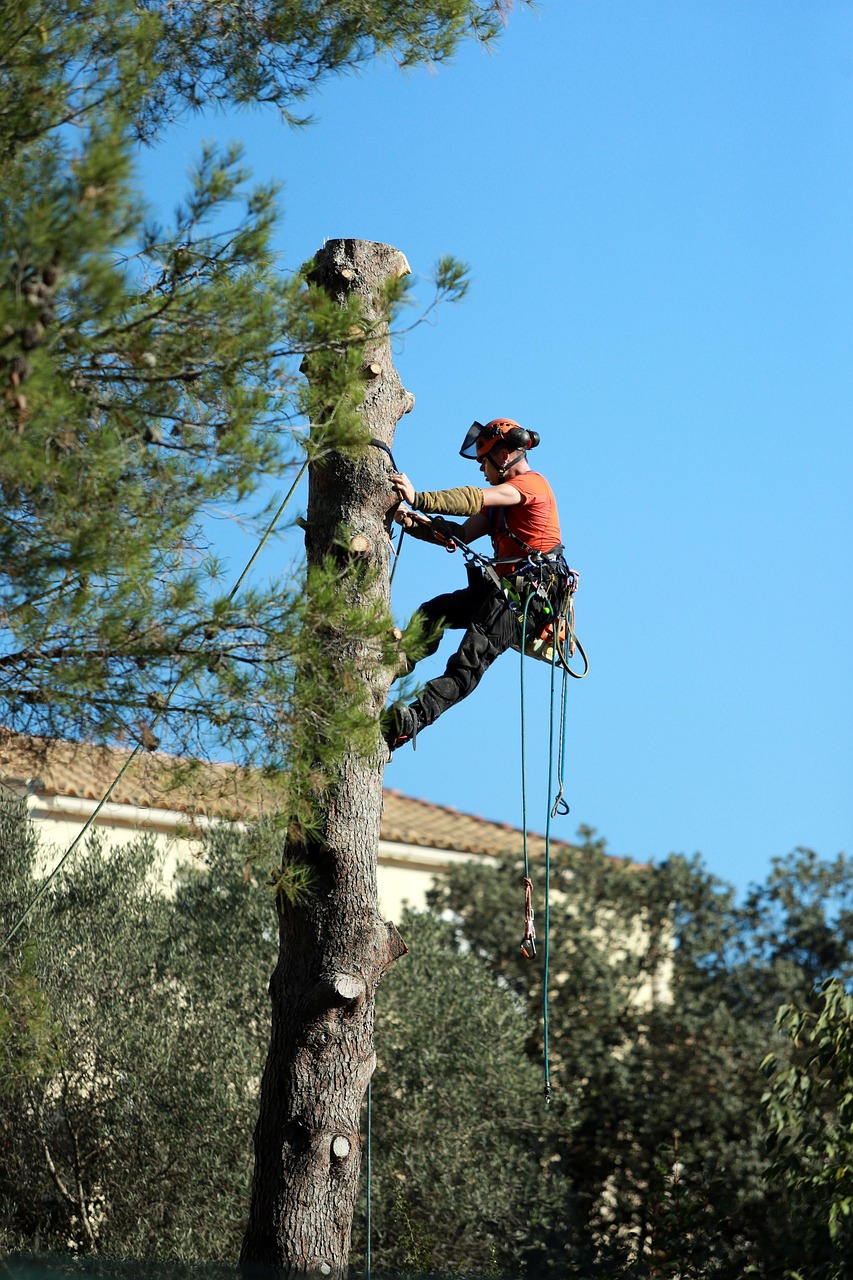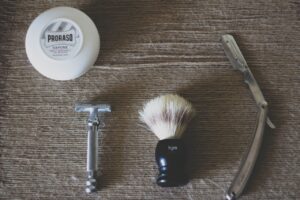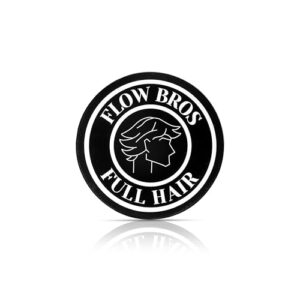Trim Like a Pro Without Leaving Home
Ready to tame your beard at home? This guide walks you through preparation, shaping, trimming, detailing, and maintenance with PRO tips and simple tools so you finish every trim confident, clean, and intentional—no barber appointment required today with minimal fuss.
What You'll Need
Trim Your Beard at Home Like a Pro: 5 Essential DIY Tips
Prep Your Canvas
Want fewer mistakes and faster results? The right prep changes everything.Start by washing your beard with warm water and a gentle beard shampoo to remove oils and product. Pat dry with a towel until slightly damp — not dripping — so clippers glide evenly.
Comb downward to detangle and reveal your natural growth direction. Apply a few drops of beard oil or softener if your hair is coarse; wait 3–5 minutes for absorption so the hair lays predictably.
Stand in good lighting and use a mirror to examine cheek lines, jawline, and density. Decide the overall length and shape you want — e.g., short stubble, medium length, or full beard — and note problem areas like cowlicks or patchiness.
Lightly map cheek and neck lines with a comb to create visual guides before trimming. This prep reduces uneven cuts and speeds up the rest of the process.
Check before you trim:
Choose Your Tools and Length
Start longer than you think — you’ll thank me when nothing looks irreversibly wrong.Select the right tools before you start: a reliable trimmer (corded or cordless) with variable guards, sharp barber scissors, a fine-tooth comb, a straight razor or detail trimmer for edges, and a hand mirror. Keep spare batteries charged or the cord handy.
Start with a longer guard than you think you need—#2 = close stubble, #4–#6 = short to medium beard. Hold the trimmer against the grain for a uniform cut, then switch to the grain for refinement. Comb and snip stray hairs as you go. Work in small sweeps, comb frequently to check progress, and pause to assess symmetry from different angles.
Trim the Bulk
The no-regret cut: remove bulk first so you can shape without panic.Attach your chosen guard and remove bulk across cheeks, sides, and chin. Work from back to front with long, even strokes, keeping the trimmer perpendicular for a consistent length.
Trim both sides, then the center chin, cross-checking symmetry after each pass. Switch to shorter guards at the neckline and under the jaw for a fade; blend by overlapping guard sizes.
Trim the mustache last with a smaller guard or scissors.
Always cut less than you think; you can always shorten later. Comb through, feel for uneven patches, and re-trim any inconsistencies. Keep movements steady, breathe, and take breaks every few minutes to prevent rushing mistakes. Use light pressure to avoid creating uneven spots; wipe trimmer blades and inspect your work from arm’s-length and different angles to catch mistakes early.
Define Clean Edges
Crisp edges make an average beard look intentional—here’s how to get them.Sharpen your lines for a professional finish. Place two fingers above the Adam’s apple to find your natural neckline; everything below that curve gets cleaned.
Use a trimmer without a guard or a razor to remove hair under the line, working upward to create a crisp boundary. Example: imagine drawing a shallow “U” between your ears and jawline.
Keep skin taut, use short strokes, rinse blades frequently. Warm water softens follicles; check lines from multiple angles and trim stray hairs as needed.
Detail the Mustache and Small Areas
Tiny tweaks yield big polish — the secret lives in the mustache and corners.Trim the mustache with scissors over a comb: comb hairs down, snip conservatively any that fall onto the lip, then comb and repeat. Example: trim a few hairs, test with a quick smile, adjust only where needed.
Tidy the under-nose strip by working vertically with small snips or a fine trimmer to keep a neat gap from nostrils to lip. Work from center outward for even length.
Use a dedicated trimmer for stray ear and nose hairs. Use a precision trimmer or razor for hard-to-reach corners. Steady your non-dominant hand against your face and move slowly for control.
Finish by applying a light beard oil or balm, combing into place, and noting any spots to address at your next trim. Regular small touch-ups keep your beard polished between major trims. Also trim for symmetry, keep the mouth visible, and tidy nose hair.
Final Check, Maintenance, and Troubleshooting
Keep it sharp between trims — and know what to do when things go wrong.Finish by doing a thorough audit: step back 2–3 feet, tilt your head, and scan for symmetry, length consistency, and crisp lines. Look for low spots or uneven angles.
Use scissors for small corrections and a shorter guard to blend any low spots. Soften overcuts with a razor rather than trying to regrow instantly; style with balm to visually even out length (example: feather a too-sharp cheek line with short razor strokes).
Trim: stubble every 3–7 days; short beards every 1–2 weeks; longer beards every 3–6 weeks.
Maintain: clean and oil trimmer blades after each use; replace worn guards; keep batteries charged.
Save: keep photos of favorite styles to replicate looks.
Visit: a barber for one-time templates or complex shaping.
Treat: use beard shampoo and oil for itch/dandruff; consult a dermatologist for persistent irritation or hair loss.
Recheck in different light and take a quick photo to compare next time.
You’ve Got This
With simple prep, steady technique, and regular maintenance, you can keep your beard sharp between barbers. Start slow, learn your face, refine over time, then give it a try and share your results—post photo or tag us to show off!













I like the ‘Define Clean Edges’ section but felt it skimmed on practical steps.
For example: when cleaning the cheek line, do you recommend drawing a faint guideline with a trimmer first, then shaving, or shaving then refining? The article could use a step-by-step for that specific move.
Also try taking a phone pic after the guideline — sometimes the mirror distorts symmetry and the photo shows the real deal.
Great feedback — drawing a faint guideline with the trimmer first is a safe approach. Trim the cheek area to your intended line (shorter, but not shaved), then use a razor or detail trimmer to clean below that line. I’ll update the guide to include that explicit sequence.
I always map the line with a lighter touch then step back and check symmetry. The mirror trick (tilt your head) helps a lot.
Followed the guide yesterday and definitley saw an improvement. The “Trim the Bulk” step saved me from over-shearing the cheeks.
I messed up the neck line once (classic) but the troubleshooting tips showed me how to blend it back in. 10/10 would recommend to a friend.
Minor nit: a couple of the pictures could be clearer, but text is solid.
I went with a #3 for bulk and used scissors to finish the mustache. Works for my face shape.
What guard did you use for the bulk, Michael? Trying to replicate your look.
Awesome — glad it helped! Thanks for the feedback about the photos, we’ll look into higher-res images or additional angles.
Same — neck line is where I panic every time. The guide calmed me down a bit.
Loved the mustache tips. I used to look like a startled raccoon whenever I tried trimming that area 😅
Question: do you recommend trimming the mustache before or after defining the cheeks and neck? I keep messing up the flow.
Trim the bulk (including mustache length) before you define edges. That way you see the overall shape and can make cleaner edge lines afterward.
I do mustache last, actually — personal preference. I find it easier to match the lip line once everything else is in place.
So, quick question — the section on “Choose Your Tools and Length” lists clipper guards but doesn’t map them to millimeters. Anyone got a simple guard-to-mm cheat sheet? 🙏
Good idea — here’s a quick mapping: #1 ≈ 3mm, #2 ≈ 6mm, #3 ≈ 9mm, #4 ≈ 12mm, #5 ≈ 16mm, #6 ≈ 19mm. Exact sizes can vary by brand, so check your trimmer’s manual if you can.
Adding on: if you want a stubbly look go with 1-2, short beard 3-4, fuller 5+. Play around on the sideburns first.
If your trimmer has an adjustable lever, you can micro-adjust between guard sizes. Saved my life when matching both sides.
Some trimmers have mm markings on the guards themselves — worth checking. And remember to go longer then shorter; you can always take more off.
Section 5 (Detail the Mustache and Small Areas) made me nervous — tiny mistakes feel forever.
Any tips for keeping the mustache symmetrical without measuring tools? I tried using a credit card once as a straight edge and it looked ridiculous lol.
Start by trimming conservatively — remove less at first. Use the center of your philtrum (the dip above your lip) as a visual guide for symmetry. Also, comb the mustache straight down and snip small bits with scissors before touching the trimmer.
If you have a light, aim it down the center of your nose to project a shadow line on the mustache — helps you see the middle without gadgets.
How often should I do a full trim vs just a tidy-up? The maintenance section mentions frequency but not specifics. I’m trying to keep a medium-length beard and don’t want to overdo it.
Agree with that. I do a light trim every 7–10 days to keep shape and a deeper cut once a month.
For medium-length beards: full trim every 3–4 weeks, tidy-ups (neck/cheeks) weekly or every 10 days. Adjust based on how fast your hair grows and your desired neatness.
Great breakdown of tools. One thing I’d love to know more about: foil vs rotary shavers for the final edges — any recommendations? I have sensitive skin and tend to get irritation with razors.
Also, does the guide assume an electric trimmer or a manual one? I use a trimmer with no guards sometimes and the results are… uneven. 😬
Another tip: shave in the direction of hair growth for the first pass, then across for a closer finish if your skin tolerates it.
I switched to a foil and my razor burn disappeared. Worth the small investment if your skin’s sensitive.
Foil for edges, rotary for general cleanup — that’s my setup. Use a post-shave balm to reduce irritation.
If you get redness, try a cold compress right after trimming + an alcohol-free aftershave.
Foil shavers are typically better for sensitive skin — they cut hair against a thin foil and are gentler. Rotary shavers are great for contours but can be harsher. The guide covers both manual and electric trimmers; if you’re using no-guard trimming, take it slow and use comb/scissors as a buffer.
Great guide — really thorough.
I especially liked the “Prep Your Canvas” part. Washing and exfoliating before trimming made a surprising difference for me.
One thing I struggled with: do you trim when the beard is damp or fully dry? The guide mentioned both in different spots and I freaked out a bit 😂
Also, any tips for dealing with cowlicks on the jawline? They always betray me.
Nice catch — sorry for the mixed signals. Trim dry for the most accurate length (hair lies differently when wet). Use slightly damp hair only if you’re doing precision scissor work on the mustache. For cowlicks, try trimming along the natural growth direction first, then blend with a shorter guard.
I always dry-trim. My trimmer pulls less and I don’t end up with uneven lengths. Cowlicks: shorter guard and blending saved me.
Pro tip: use a little beard oil after trimming to tame cowlicks while hair grows out a bit. Works 70% of the time for me.
Short tip that saved me: use a comb and small scissors to trim split or wispy hairs before you run the trimmer over the area. Makes the final shape cleaner.
Also, keep a backup battery or cord — nothing worse than a trimmer dying mid-edge.
Agreed. Had my battery die once mid-neckline. Lesson learned: always charge the trimmer after a session.
Nice practical tip — scissors-and-comb is often underrated. And battery backups are a life-saver for travel trims.
This guide is solid but real talk: trimming someone else’s beard is a whole different beast. Tried to help my brother and nearly gave him a mullet-beard hybrid.
Anyway, the “Final Check” list is clutch. Checking from multiple angles and taking photos saved me from handing over a disaster.
If you’re a first-timer on someone else, start with scissors and go SLOW. Also: snacks to keep them calm. 😂
I volunteer as tribute for my partner’s trims. Combs + steady hand = best results. And yes, bribe them with pizza.
Snacks = 100% necessary. Also, keep a towel handy for stray hairs — nothing worse than itchy fallout for the beard owner.
Hah, pairing the guide with patient clients (or brothers) is key. Scissors-first is smart when working on others — less risky than clippers at an unfamiliar angle.
Skeptical question: how do you know which angle to hold the trimmer for clean edges? The guide shows pictures but angles look different on everyone.
Would love a short video demo for the cheek and jawline moves. Anyone know a good YouTube clip that matches this guide?
This channel helped me: ‘Barber Basics’ (search the name) — they have short, focused clips on angles for cheek and jawline trimming.
Good point — angles vary by face shape. General rule: hold the trimmer perpendicular to the surface for a straight cut (90°) for bulk removal, and tilt it slightly (around 45°) for softer blending. We’ll look into adding a short demo video soon.
Also: mirror placement matters. Try using a handheld mirror to see the side profile while you adjust angles.
If you don’t want video, try practicing angles with the trimmer off — get comfortable with hand positions first.